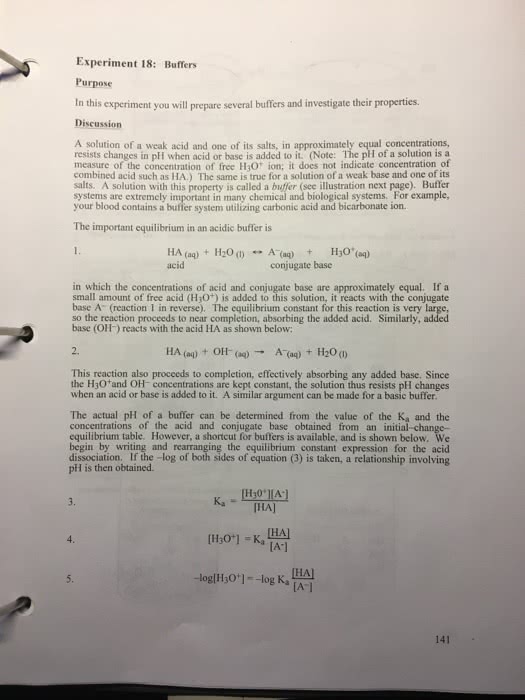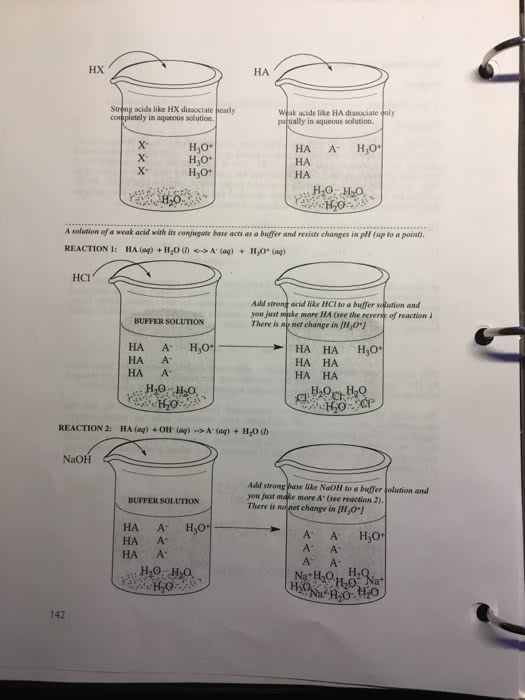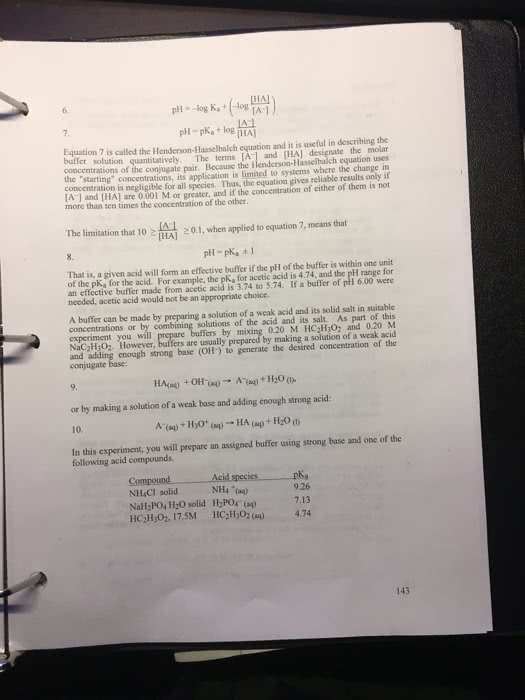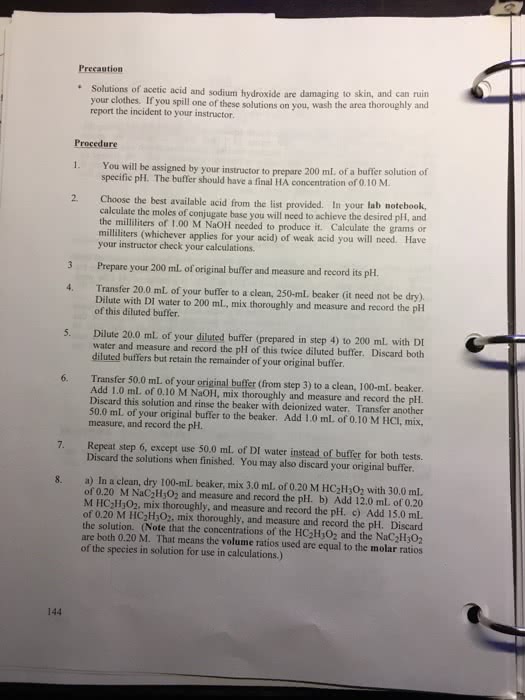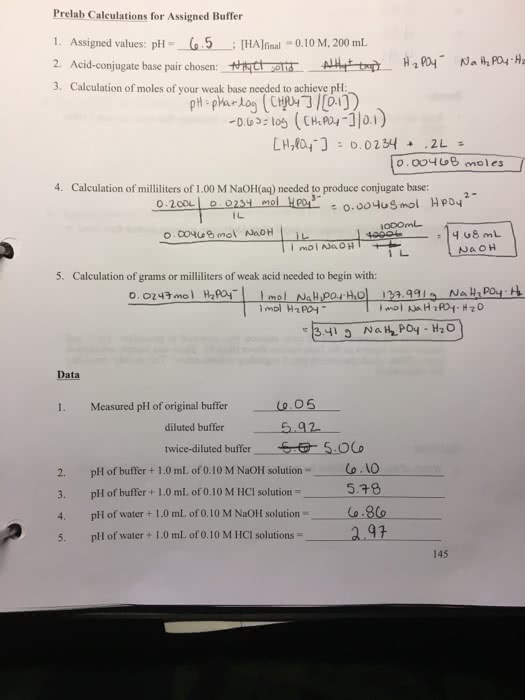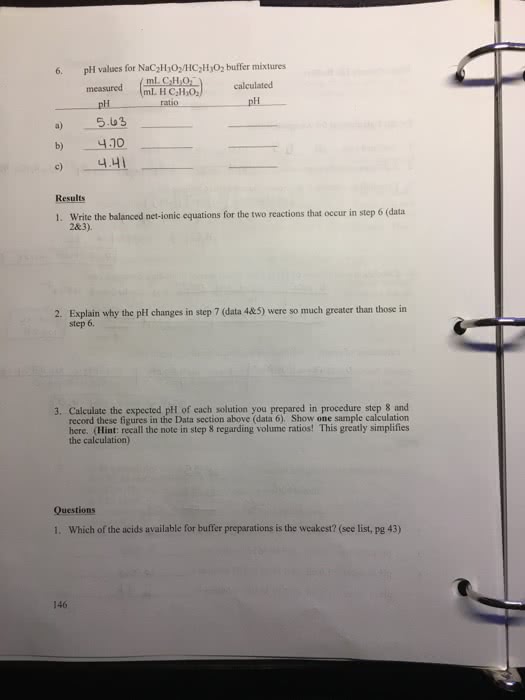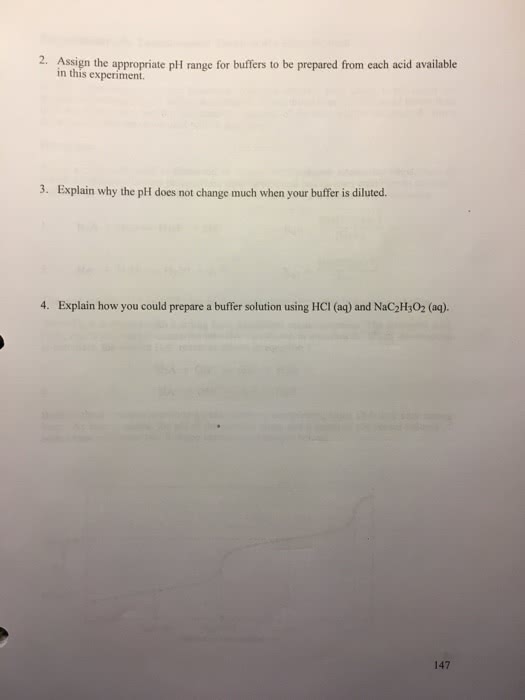CHEM237L Chapter Notes - Chapter 2: Buffer Solution, Titration Curve, Burette
Document Summary
Introduction: a buffer resists changes in ph that would other occur after adding a sb or sa which contain weak acids and their conjugate base salts (or vice versa). Capacity is higher when ha=a- and concentration is greater. Adding sa ha h+ + a- + oh- h2o. Ha h+ + a- ph = pka + log [cb]/[wa] = pka + log (cb/ca) When ca=cb, ph = pka + log 1 = pka ph equivalence #1 = pka1 + pka2 / 2. ), it is highly unlikely that the ph will be closer to pka 4 . Q1: explain what might happen when 2 and 2. 5 equivalents of strong base is added to the phosphoric acid. A1: if 1 equivalent to phosphoric acid gets h3po4 h2po4 with the first equivalence at a ph in between pka 1 and 2. The 2nd equivalent will get h2po4 hpo4 with the second equivalence at a ph between pka 2 and 3.



